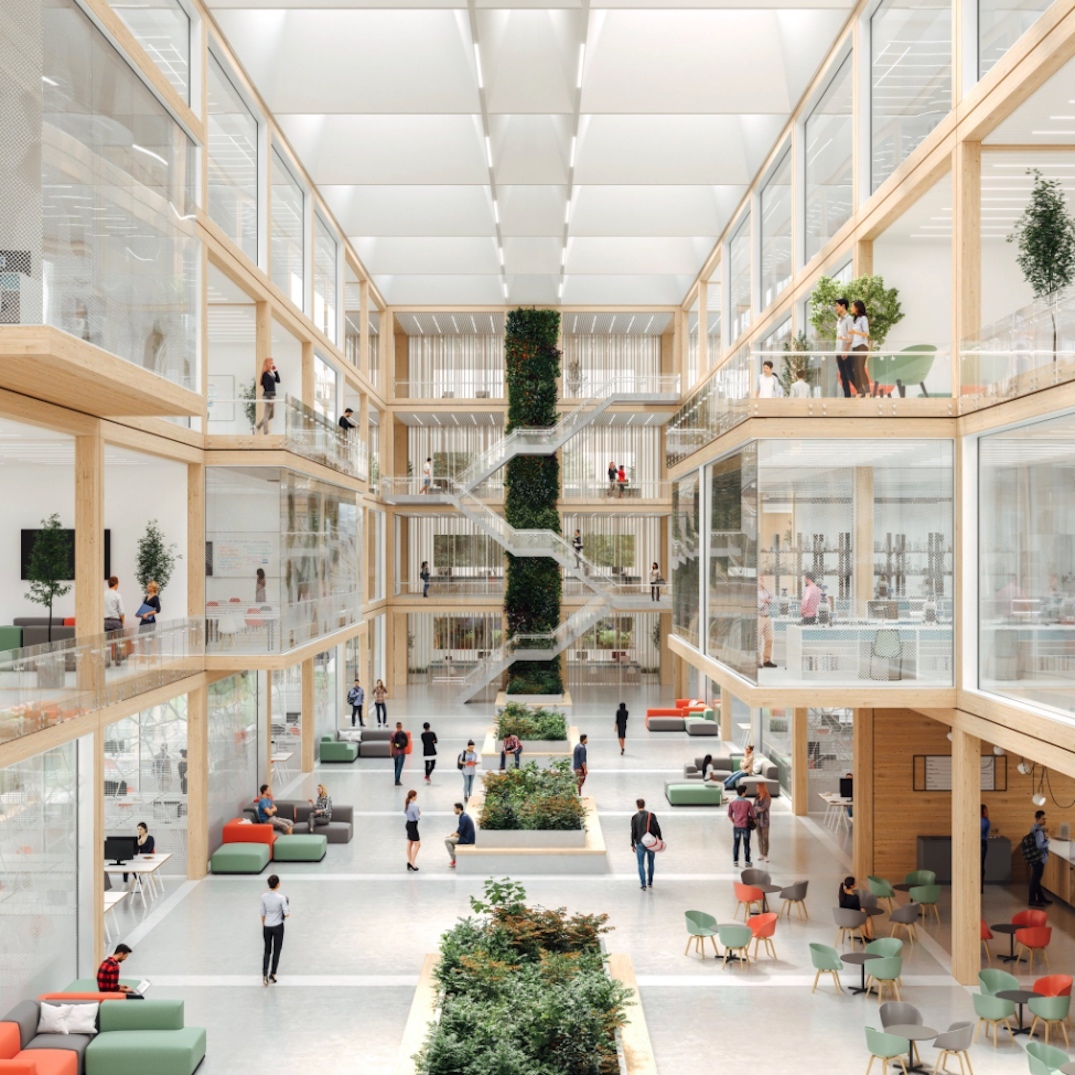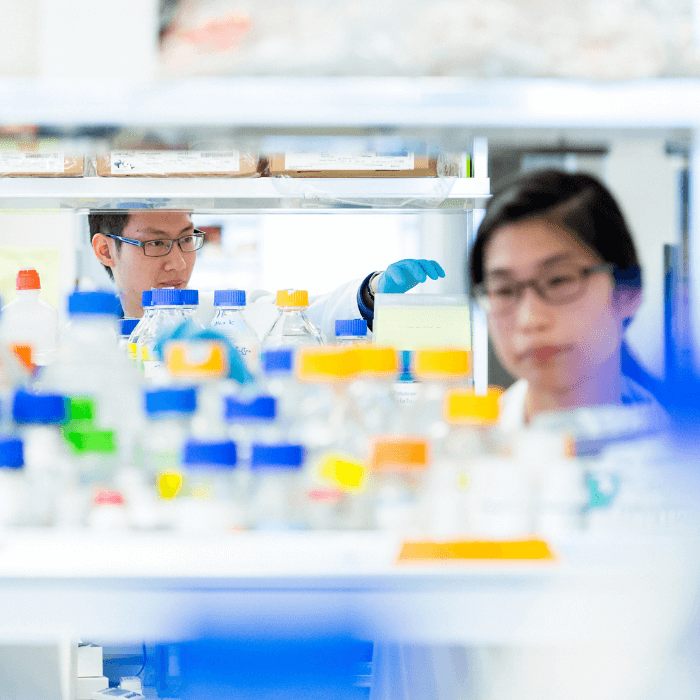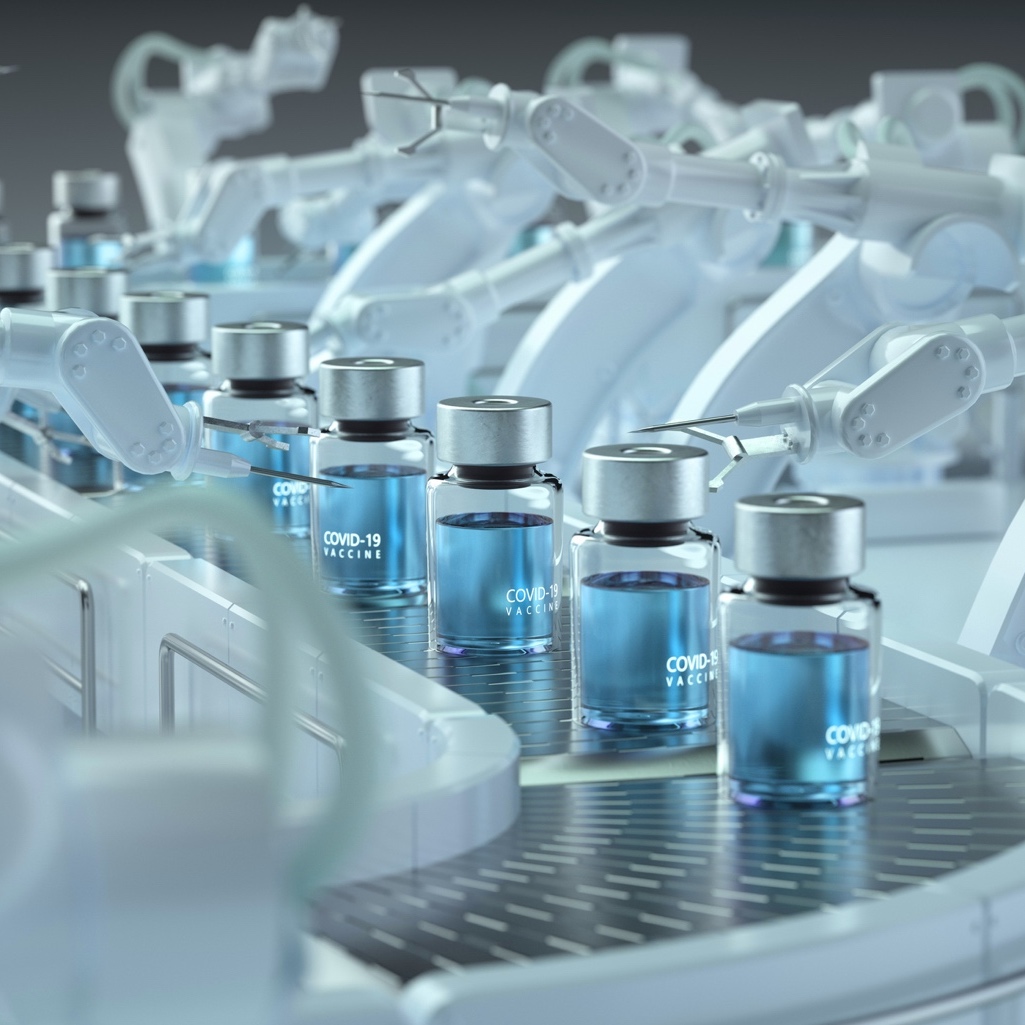How to accelerate
biomedical innovation
Biomedical innovation is about saving more lives, sooner.
When UBC researchers discover a potential new treatment for a disease like prostate cancer or diabetes, their scientific breakthrough begins a six-step journey from the laboratory to the patient, arriving in the form of lifesaving medicine.
It’s a journey that requires a combination of world-class scientific expertise, rigorous clinical trials, powerful data tools, and bio-manufacturing capabilities. It also requires careful coordination between patients, communities, researchers, business and government.
By working together and addressing key challenges, we can accelerate biomedical innovation and grow a more resilient and responsive biomanufacturing sector in British Columbia. This will enhance Canada’s ability to respond rapidly to future pandemics and health challenges, bringing lifesaving treatments to patients and their families sooner.
Explore how UBC is addressing gaps and developing solutions across each of the six steps — to transform health for everyone.
Emma’s Story
A difficult diagnosis
In 2018, Emma was diagnosed with a rare and aggressive form of brain cancer. She was 16 years old. Intense headaches and debilitating nausea made schoolwork next to impossible, and prevented her from doing the things she loved, like performing with her school’s cheerleading squad.
Emma underwent two surgeries and over 30 rounds of radiation therapy — but the tumour in her brain continued to grow. Chemotherapy held little promise.
Emma and her parents had exhausted every option.
Or so they thought.
Emma was prescribed a newly approved cancer drug based on groundbreaking research by Dr. Poul Sorensen, a professor of pathology and laboratory medicine at UBC.
Time would tell whether her tumour would shrink. All Emma and her parents could do now was wait — and hope.
Every year, scientists like Dr. Sorensen make discoveries with lifesaving potential. Here’s how their ideas become patient-ready treatments.
Step One
Research & Discovery
Teams of UBC researchers combine their expertise in basic science, genomics, oncology, medical genetics, biology, computer science, biophysics, and other disciplines to find new ways to treat and cure diseases. When a promising new treatment pathway is found, the research is published, shared and licensed for development — usually by pharmaceutical companies or spin-off biotechnology firms.
Research & Discovery
Story:
Solving the riddle of cancerous tumours
Dr. Sorensen discovers a genetic mutation that causes tumour cells to produce a cancer-causing enzyme. He and his team show that, by manipulating certain biochemical pathways, the enzyme can be switched off.
Research & Discovery
Story:
Supercharging drug discovery
Dr. Artem Cherkasov develops an AI-powered drug discovery platform that can screen billions of candidate drug compounds in a matter of days instead of years. His work paves the way for the rapid development of new COVID-19 antivirals and other drugs.
Research & Discovery
Key gap:
Validation & clinical pharmacology
Once the treatment pathway has been identified, pharmacologists and data scientists identify, study and formulate drug compounds, gene therapies and cell-based therapies that can effect the desired change in the body. At this stage, biomedical engineers may also prototype biomedical devices to deliver the treatment.
Traditionally, the validation and clinical pharmacology stage takes years, even decades, and represents a major bottleneck in the biomedical innovation pipeline.
Research & Discovery
Solution:
The Academy of Translational Medicine
UBC’s newly launched ATM brings together partners from across the life sciences, business, health and government sectors to accelerate every stage of the development process.
The ATM facilitates a culture of collaboration, data sharing, and the use of real-world evidence, all of which will help to deliver safe and effective treatments in record speed.
Step Two
Early Stage
Bio-Manufacturing
At this stage, the treatment and/or prototype biomedical device is manufactured and tested for safety and efficacy in a laboratory setting.
Bio-Manufacturing
Story:
Using stem cells and 3D bio-printing to treat diabetes
Dr. Tim Kieffer and Dr. David Thompson work with biotech company ViaCyte to develop a 3D-printed medical implant containing stem cells that have been ‘coached’ into producing insulin – offering a potential functional cure for diabetes.
Bio-Manufacturing
Key gap:
Bio-manufacturing infrastructure
British Columbia currently lacks the bio-manufacturing infrastructure to manufacture and test new cell- and gene-based therapies based on breakthrough research.
This stage of the pipeline usually happens outside the province, which not only slows down the development process, but results in lost economic opportunities for B.C.’s life sciences and business sectors.
Bio-Manufacturing
Solution:
Good Manufacturing Practice (GMP) facility at UBC
Cell and gene-based therapies must be manufactured in facilities that meet rigorous quality and safety standards, known as GMP certification.
UBC is planning a new, state-of-the-art School of Biomedical Engineering building that will include GMP-certified bio-manufacturing testing and training facilities. Construction begins in 2024, but critical investment is still needed.

Step Three
Patient Clinical Trials
Only safe and highly promising treatments move on to human clinical trials. Here, the treatment is tested in patients and compared against placebos. Clinical trials involve multiple stages and rigorous data analysis.
Clinical Trials
Story:
Making organ transplants safer
Dr. Megan Levings’s immune-cell gene therapy enters human clinical trials in early 2022, where its efficacy will be tested in kidney transplant patients. If successful, the therapy could eliminate the need for immunosuppressant drugs and vastly improve patients’ quality of life.
CLINICAL TRIALS
Key gap:
Clinical trials infrastructure
While B.C. is home to human clinical trials for exciting treatments such as Dr. Kieffer and Dr. Thompson’s type-1 diabetes device, its capacity is limited. As a result, the vast majority of therapeutics developed at UBC are sent to the U.S. or Europe for clinical trials, resulting in another bottleneck in the biomedical innovation pipeline and more missed economic opportunities for British Columbians.
Clinical Trials
Solution:
New clinical trials facility in Vancouver
UBC aspires to create a new, early stage state-of-the art clinical trials facility here in B.C. with Ministry of Health and health authority partners. Exploratory discussions are underway and support is needed to move forward.

Step Four
Clinical Translation & Regulatory Approval
The results of successful clinical trials are prepared and submitted to Health Canada for regulatory approval. Only treatments that meet the highest possible standards of safety and efficacy are approved for clinical use.
The regulatory approvals process represents another bottleneck in the pipeline — out of necessity. Each treatment submitted to Health Canada requires careful, thoroughgoing analysis.
Clinical Translation & Regulatory Approval
Story:
Harnessing the regulatory process to fuel biomedical innovation
The ATM’s Regulatory Advisory Council is developing innovative approaches and policy recommendations to ensure that regulators receive the information they need, when they need it, and bring life-changing biomedical innovations to patients sooner.
According to Dr. Dean Regier, chair of the ATM’s Regulatory Council, the ultimate goal is to build a “learning health care system” that embeds research into health delivery.
By leveraging real-world evidence alongside rapid, high-quality clinical trials, we can accelerate biomedical innovation and improve patient care in real time.
“That would also mean tremendous cost savings for the whole ecosystem, including our health care system,” says Dr. Anne Steino, ATM manager of operations.
Step Five
Commercialization
Once the treatment has been approved for commercial use, it is manufactured at scale, marketed, and released to the health care system as a patient-ready treatment.

Commercialization
Story:
UBC-grown biotech companies lead pandemic efforts
Dr. Pieter Cullis and other UBC researchers are turning their breakthrough research into patient-ready treatments — while helping to grow B.C.’s dynamic biomedical innovation sector, one spin-off biotech company at a time.
Commercialization
Story:
Company led by UBC professor raises US$40m to advance drug discovery
Gandeeva Therapeutics, a Vancouver-based company led by UBC’s Dr. Sriram Subramaniam, is accelerating the development of new precision medicines through cryo-electron microscopy and artificial intelligence.
Step Six
Patient-Ready Treatments
Breakthrough medicines reach patients sooner, saving more lives, and bringing new hope to patients and their families.
Thanks to Dr. Sorensen’s anti-tumour drug, Emma was able to resume her normal life within a few months of starting treatment. She graduated from high school at the top of her class — while finding time to lead the cheerleading squad.
Now in remission, Emma started university this past September with her sights set on a career in business or health care administration.
